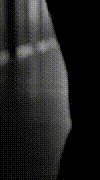Technical question for all you producers, tech heads, video guys:
Why are some tickle clips crystal clear quality, while others grainy?
I'll name companies: if you look at a place like Tickle Abuse, UK Tickling, etc. their clips are crystal clear.
A place like Simply Tickling, which features the jaw dropping Savannah, and Tickle Addiction, they got a bit of grain, and aren't as SHARP as the above.
A place like Tickle Torture, which has really fun clips, lots of wonderful pantyhose, even more grain and not as sharp as those two categories above.
Are there steps these guys who make the less sharp and clear clips can take to get better quality?
This isn't in ANY way critical of their work, because I own several clips from all these mentioned above, so they got my money!
But in my example in an earlier thread - it's like having early Picasso (before he got all weird and shit) and giving him some tempera paint instead of oil paint -
Yeah, he could still make a damn good picture, ...but with his talent, the man needs the finest oil paints.
Michelangelo could probably make some good stuff with Plaster of Paris....but you should really give him stone.....
Why are some tickle clips crystal clear quality, while others grainy?
I'll name companies: if you look at a place like Tickle Abuse, UK Tickling, etc. their clips are crystal clear.
A place like Simply Tickling, which features the jaw dropping Savannah, and Tickle Addiction, they got a bit of grain, and aren't as SHARP as the above.
A place like Tickle Torture, which has really fun clips, lots of wonderful pantyhose, even more grain and not as sharp as those two categories above.
Are there steps these guys who make the less sharp and clear clips can take to get better quality?
This isn't in ANY way critical of their work, because I own several clips from all these mentioned above, so they got my money!
But in my example in an earlier thread - it's like having early Picasso (before he got all weird and shit) and giving him some tempera paint instead of oil paint -
Yeah, he could still make a damn good picture, ...but with his talent, the man needs the finest oil paints.
Michelangelo could probably make some good stuff with Plaster of Paris....but you should really give him stone.....






